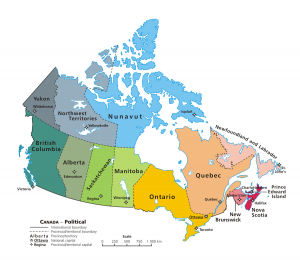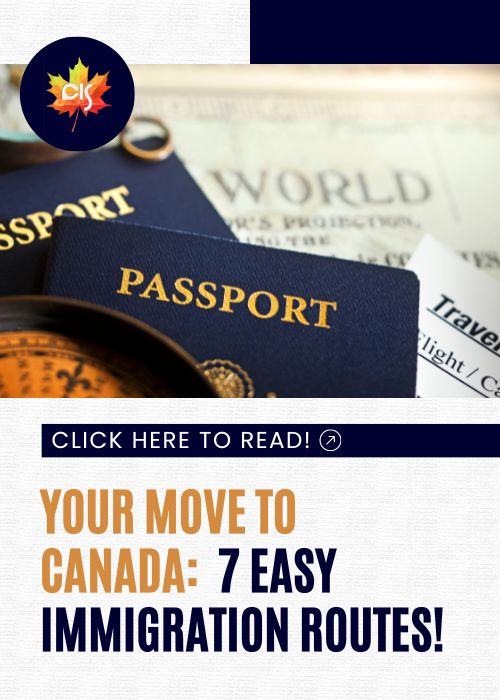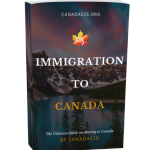How to Choose the Best Canadian Province to Immigrate to
Home » Blog » Immigration to Canada » How To Choose The Best Canadian Province To Immigrate To
And if you aspire to be one of them this year, you should know that there multiple pathways for your application. Each pathway consists of different set of eligibility requirements and processes.
It is also important to know that each Canadian province has a set of immigration pathways exclusive to the teritorry.
Table of Contents
🛫 What province should I choose for immigration to Canada?
Hard question, isn’t it?
Don’t worry – you’ve come to the right place where to find the answer.
We’ll give you an overview of all provinces, so that you compare them and decide where to start your new life in Canada.
Also, we’ll give you tips on how to understand which province is the most suitable for you.
So, let’s dig into your question in more details.
📍 The Provinces in Canada
Canada has ten provinces and three territories.
You probably wonder what’s the difference between provinces and territories.
It’s simply the matter of power and organization: provinces have their own governments, while territories are ruled by the federal government.
For you it doesn’t change anything – all provinces and territories are open to immigration.
Let’s have a look at all of them:
Famous for: Niagara falls, Great Lakes, rapid economic growth.
Big cities: Toronto, Ottawa, Hamilton.
Top industries: manufacturing, biotech, automotive.
Famous for: high living standards, high average income, diverse local food.
Big cities: Vancouver, Surrey, Burnaby.
Top industries: engineering, agriculture, natural gas and mining, forestry.
Famous for: national parks (UNESCO world heritage sites), large oil and gas reserves.
Big cities: Calgary, Edmonton, Red Deer.
Top industries: construction, oil and gas, mining, finance, real estate, agriculture.
Famous for: high living standards, high average income, diverse local food.
Big cities: Winnipeg, Brandon, Steinbach.
Top industries: manufacturing, transportation, biotechnology, IT, tourism.
Famous for: diverse wildlife, gorgeous architecture, Athabasca Sand Dunes.
Big cities: Saskatoon, Regina, Prince Albert.
Top industries: meat processing, agriculture, manufacturing, oil and gas.
Famous for: warm beaches, excellent seafood, giant lobsters.
Big cities: Fredericton, Saint John, Moncton.
Top industries: aerospace, manufacturing, marine, forestry, oil and gas.
Famous for: coal resources, lobsters, beautiful lighthouses.
Big cities: Halifax, Sydney, Truro.
Top industries: agriculture, manufacturing, finance, film and TV production.
Famous for: red sand beaches, PEI National Park, large production of potatoes.
Big cities: Charlottetown, Summerside, Stratford.
Top industries: aerospace, bioscience, fisheries, IT, agriculture.
Famous for: mix of cultures (English, Irish, and French), rich history.
Big cities: John’s, Paradise, Mount Pearl.
Top industries: mining, real estate, construction.
Famous for: Arctic wildlife, Northern Lights, winter sports.
Big cities: Iqaluit, Rankin Inlet, Arviat.
Top industries: fishing, hunting, mining.
Famous for: Wood Buffalo National Park, small population, diverse wildlife.
Big cities: Yellowknife, Inuvik, Hay River.
Top industries: tourism, fishing, hunting.
Famous for: mineral resources, small size.
Big cities: Whitehorse, Dawson City, Watson Lake.
Top industries: energy, fishing, hunting.
Famous for: European atmosphere, gorgeous architecture, large francophone community.
Big cities: Montreal, Quebec City, Ottawa-Gatineau.
Top industries: manufacturing, mining, engineering, telecommunications, tourism.
🍁 So, how to know which province is the best?
To make a really good choice, you need to do a bit of a research beforehand.
Or, you can just ask an immigration consultant – a real professional will easily evaluate your goals and suggest you a few best places to choose from.
In any case, we suggest you to follow these few steps when looking for the best place where to immigrate in Canada.
Different provinces and cities have different needs for foreign workers.
You need to ensure that your selected province will have enough job offers to choose from.
- Let’s say, a management job in finance, accounting or real estate is easier to find in big cities, like Toronto, Vancouver or Montreal.
- If you are looking for foresting or fishing jobs, you should check remote areas further from big cities. For example, New Brunswick or Yukon would be perfect.
- If you are not confident in your English skills, but speak good French, check out jobs in Quebec. Chances are, you will find more French-speaking jobs there.
- If you’re searching for jobs in Mauritius, UK, USA, or other English-speaking countries, check out jobs in Ontario.
Simply search for the most updated job vacancies online and compare the numbers in different provinces.
Choose the province where you know your profession is needed the most.
One thing you should know – Canada is a very big and diverse country.
When it comes to cost of living, it’s very diverse too.
Prices for accommodation differ across cities and provinces, and we strongly recommend you to check them in advance.
First of all, decide what kind of housing you want to live in: house/apartment/studio etc.
Then, look up prices in different cities and choose the one that seems affordable to you.
Let us give you some examples of rent prices:
- Montreal: 🏠 1-bedroom apartment: $1,500+ per month
- Charlottetown: 🏠 1-bedroom apartment: $700+ per month
- Vancouver: 🏠 1-bedroom apartment: $1,450+ per month
- Whitehorse: 🏠 1-bedroom apartment: $950+ per month
As you see, prices can be twice higher in some places, as opposed to other.
Also, think of the environment you would like to live in.
Would you prefer a quiet place surrounded by nature or a busy dynamic megalopolis with many bars and fun places around?
This is also very important for your choice.
It’s obviously a very important step.
When you select a few provinces you are interested in, check out which immigration opportunities it provides.
We suggest you to choose 3-5 options, explore different opportunities and not focus on one province only.
Each province and territory has its own immigration programs and so-called immigration streams.
If you don’t seem to fit into any of the PNP requirements, don’t worry.
There are other ways to move to Canada, besides Provincial Nominee Programs.
You can explore Federal Programs, Express Entry system and other alternatives.
Ask an immigration consultant – after an eligibility assessment, you will get a report with the best provinces and immigration programs for you.
🛤️ Immigration Routes to Canada For All Provinces
Canada is known for its welcoming immigration policies, offering various pathways for individuals from around the world to make it their home. The country’s immigration system is diverse, accommodating skilled workers, entrepreneurs, family reunification, and refugees.
Each province and territory in Canada has its own immigration programs, contributing to the nation’s cultural and economic vibrancy.
Regardless of which province you opt to immigrate to, Canada’s immigration landscape is dynamic, with programs evolving to meet the changing needs of the country.
NOTE: To stay informed about the latest updates and consult with immigration professionals like CandaCIS for personalized guidance based on their unique circumstances.
Learn more about life in Canada:
Want to try something fun?
Take a fun quiz and discover which province is the best for you.
Just click on the puppy and have fun 😉









